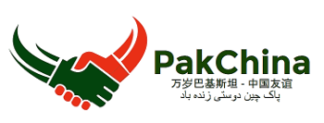China, officially the People's Republic of China (PRC), in Asia, is the world's most populous state, with a population of over 1.381 billion. The PRC is a single-party state governed by the Communist Party of China, with its seat of government in the capital city of Beijing. It exercises jurisdiction over 22 provinces, five autonomous regions, four direct-controlled municipalities (Beijing, Tianjin, Shanghai, and Chongqing), two mostly self-governing special administrative regions (Hong Kong and Macau), and claims sovereignty over Taiwan.
Covering approximately 9.6 million square kilometers, China is the world's second largest state by land area, and either the third or fourth-largest by total area, depending on the method of measurement. China's landscape is vast and diverse, ranging from forest steppes and the Gobi and Taklamakan deserts in the arid north to subtropical forests in the wetter south. The Himalaya, Karakoram, Pamir and Tian Shan mountain ranges separate China from South and Central Asia. The Yangtze and Yellow Rivers, the third- and sixth-longest in the world, run from the Tibetan Plateau to the densely populated eastern seaboard. China's coastline along the Pacific Ocean is 14,500 kilometres (9,000 mi) long, and is bounded by the Bohai, Yellow, East and South China Seas.
China had the largest economy in the world for most of the past two thousand years, during which it has seen cycles of prosperity and decline. Since the introduction of economic reforms in 1978, China has become one of the world's fastest-growing major economies. As of 2014, it is the world's second-largest economy by nominal GDP and largest by purchasing power parity (PPP). China is also the world's largest exporter and second-largest importer of goods. China is a recognized nuclear weapons state and has the world's largest standing army and second-largest defence budget. The PRC has been a United Nations member since 1971, when it replaced the ROC as a permanent member of the U.N. Security Council. China is also a member of numerous formal and informal multilateral organizations, including the WTO, APEC, BRICS, the Shanghai Cooperation Organization (SCO), the BCIM and the G-20. China is a great power and a major regional power within Asia, and has been characterized as a potential superpower.
Etymology

The word "China" is thought to have been originally derived from the Sanskrit word Cīna (चीन), which is translated into the Persian word Chīn (چین). Cīna was first used in early Hindu scripture, including the Mahābhārata (5th century BCE) and the Laws of Manu (2nd century BCE). The word "China" itself was first recorded in 1516 in the journal of the Portuguese explorer Duarte Barbosa. The journal was translated and published in England in 1555.
| Capital | Beijing 39°55′N 116°23′E |
| Largest City | Shanghai |
| Official Languages | Standard Chinese |
| Recognised Regional Languages | Mongolian Tibetan Uyghur Zhuang |
| Official Written Language | Vernacular Chinese |
| Ethnic Groups | 91.51% Han 55 minorities |
| Demonym | Chinese |
| Area | 9,596,961 km2, 3,705,407 sq mi Water (%) 2.8% |
| Population 2015 Estimate | 1,376,049,000 |
| Currency | Renminbi (yuan; ¥) (CNY) |
| Time Zone | China Standard Time (UTC+8) |
| Date Format | yyyy-mm-dd or yyyy年m月d日 (CE; CE-1949) |
| Drives on the | right |
| Calling Code | 86 |
| ISO 3166 Code | CN |
| Internet TLD | .cn .中國 .中国 |
National Emblem of the People's Republic of China

The National Emblem of the People's Republic of China contains in a red circle a representation of Tiananmen Gate, the entrance gate to the Forbidden City, where Mao declared the foundation of the People's Republic of China (PRC) in 1949. Above this representation are the five stars found on the national flag. The largest star represents the Communist Party of China, while the four smaller stars represent the four social classes as defined in Maoism.
The outer border of the red circle shows sheaves of wheat and the inner sheaves of rice, which together represent agricultural workers. At the center of the bottom portion of the border is a cog-wheel that represents industrial workers.
According to The Description of the National Emblem of the People's Republic of China, these elements taken together symbolise the revolutionary struggles of the Chinese people since the May Fourth Movement and the coalition of the proletariat which succeeded in founding the People's Republic of China.
National Symbols of China
Administrative Divisions
The People's Republic of China has administrative control over 22 provinces and considers Taiwan to be its 23rd province, although Taiwan is currently and independently governed by the Republic of China, which disputes the PRC's claim. China also has five subdivisions officially termed autonomous regions, each with a designated minority group; four municipalities; and two Special Administrative Regions (SARs), which enjoy a degree of political autonomy. These 22 provinces, five autonomous regions, and four municipalities can be collectively referred to as "mainland China", a term which usually excludes the SARs of Hong Kong and Macau. None of these divisions are recognized by the ROC government, which claims the entirety of the PRC's territory.
Provinces (省):
- Anhui (安徽省)
- Fujian (福建省)
- Gansu (甘肃省)
- Guangdong (广东省)
- Guizhou (贵州省)
- Hainan (海南省)
- Hebei (河北省)
- Heilongjiang (黑龙江省)
- Henan (河南省)
- Hubei (湖北省)
- Hunan (湖南省)
- Jiangsu (江苏省)
- Jiangxi (江西省)
- Jilin (吉林省)
- Liaoning (辽宁省)
- Qinghai (青海省)
- Shaanxi (陕西省)
- Shandong (山东省)
- Shanxi (山西省)
- Sichuan (四川省)
- Yunnan (云南省)
- Zhejiang (浙江省)
- Taiwan (台湾省) governed by ROC
Autonomous Regions (自治区):
- Guangxi (广西壮族自治区)
- Inner Mongolia / Nei Mongol (内蒙古自治区)
- Ningxia (宁夏回族自治区)
- Xinjiang (新疆维吾尔自治区)
- Tibet / Xizang (西藏自治区)
Municipalities (直辖市):
- Beijing (北京市)
- Chongqing (重庆市)
- Shanghai (上海市)
- Tianjin (天津市)
Special Administrative Regions (特别行政区):
- Hong Kong / Xianggang (香港特别行政区)
- Macau / Aomen (澳门特别行政区)

